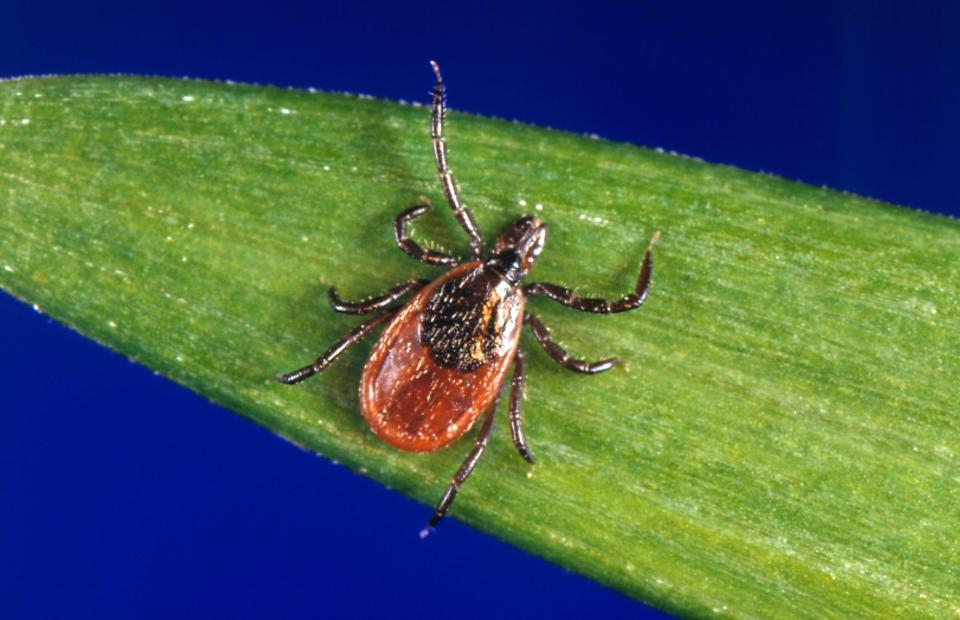What is Powassan virus? What to know about the disease caused by a tick bite
Four people in Connecticut have tested positive for Powassan virus, the state department of health confirmed Monday, the first cases of the virus identified in Connecticut this year.
Powassan virus is rare, according to the Centers for Disease Control and Prevention, but the number of reported cases has increased in recent years. The virus is spread through a tick bite.
All four of the patients had reported a known tick bite and were hospitalized with a central nervous system disease, the Connecticut Department of Public Health said, and laboratory tests confirmed they all had the presence of Powassan virus antibodies. They have all since been discharged and are recovering.
Here's what to know about Powassan virus.
What is Powassan virus?

Powassan virus is spread through a bite from an infected blacklegged, or deer tick, according to the Connecticut Department of Public Health, and the virus can be transmitted in as little as 15 minutes after a tick first attaches itself to you.
Associated illness with the virus have been reported from early spring until late fall.
Nervous about a tick bite? Here's what to know about Lyme disease from symptoms to treatment
Where is Powassan virus found?
The virus' name comes from Powassan, Ontario, Canada, after it caused the death of a 5-year-old diagnosed with encephalitis, or an infection of the brain.
Powassan virus has been found in North America, in the U.S. and Canada, and in Russia.
What are the symptoms of Powassan virus?
According to the CDC, it can take between one week to a month to develop symptoms after the tick bite, although many people infected with Powassan virus do not have any symptoms.
Initial symptoms to look out for include fever, headache, vomiting and weakness.
Powassan virus can also cause severe disease, including encephalitis or meningitis, or infection of membranes around the brain and spinal cord. These symptoms can include confusion, loss of coordination, difficultly speaking and seizures.
Approximately 1 out of 10 people with with severe disease die, according to the CDC, and half the people who survive severe disease have long-term health problems, including recurring headaches, loss of muscle mass and strength and memory problems.
What is AGS? This tick-borne meat allergy may have affected half a million people, CDC says
How is Powassan virus diagnosed?
Health care providers can diagnose Powassan virus based on a patient's symptoms, a history of living or traveling to an area where the virus is known to circulate or a history of possible exposure to ticks that can carry the virus.
Laboratory testing of blood or spinal fluid can also lead to a diagnosis of Powassan virus, according to the CDC. Health care providers can also order tests to look for Powassan virus or other infections that can cause similar symptoms.
Is Powassan virus treatable?
There are no medications that currently prevent or treat a Powassan virus infection, according to the CDC. Antibiotics do not treat viruses.
Symptoms may be relieved by rest, fluids and over-the-counter pain medications.
People with severe disease from Powassan virus, like encephalitis or meningitis, may need to be hospitalized to help with breathing, hydration and reducing swelling in the brain.
How to prevent tick bites
Ticks are more likely to be found in grassy, brushy or wooded areas, and are active from spring to fall and warmer winter days, according to the Connecticut Department of Public Health.
Mosquito and tick repellents recommended by the CDC used while outdoors may help prevent tick bites, although repellents containing more than 30% DEET have been reported to be the most effective, the state department of health said. You can also treat clothing, boots or other outdoor gear with products containing 0.5% permethrin.
Check for ticks on yourself, children and pets immediately after coming inside, and showering within two hours may reduce the risk of a tick-borne disease. You should examine any clothing or gear you wore outside, and tumble clothes in a dryer on high heat for at least 10 minutes to kill any ticks.
For pets, talk to your veterinarian for the best tick prevention products.
This article originally appeared on USA TODAY: Powassan virus: Symptoms and treatment of disease from tick bite

